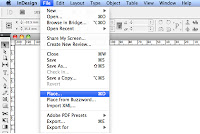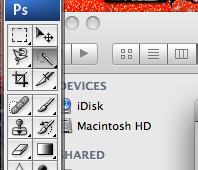Evaluation Question 7
Looking back at your preliminary task (the school magazine task), what do you feel you have learnt in the progression from it to the full product?
I believe that I have progressed a lot since my preliminary task, I can more efficiently use the software provided (adobe photoshop) to create a media product suitable for my chosen target audience. I feel that my creativity has improved highly throughout this task and I can create a higher quality product now.

 In my preliminary task I based the colours of the magazine around the colours of my school logo.(To the right) But for my actual magazine I did a lot of in depth research into the colouring aspects for existing magazines, I found that most magazines use red, white, black and yellow for their front cover, I tried to incorporate these colours within my magazine to help further lure my target audience in. I had no awareness of my targets audience needs when doing my preliminary task so I only used the blue and yellow colours; if I was to re-do my preliminary with the knowledge I have now I would make sure I had done the proper research into exisiting magazines of its kind. This would allow me to strengthen the target audiences perspective on my magazine and get the readers. I made sure the colouring on my main task was extremely accurate because I was trying to sell the magazine and gain subscribers, unlike on my preliminary which was a free magazine for school.
In my preliminary task I based the colours of the magazine around the colours of my school logo.(To the right) But for my actual magazine I did a lot of in depth research into the colouring aspects for existing magazines, I found that most magazines use red, white, black and yellow for their front cover, I tried to incorporate these colours within my magazine to help further lure my target audience in. I had no awareness of my targets audience needs when doing my preliminary task so I only used the blue and yellow colours; if I was to re-do my preliminary with the knowledge I have now I would make sure I had done the proper research into exisiting magazines of its kind. This would allow me to strengthen the target audiences perspective on my magazine and get the readers. I made sure the colouring on my main task was extremely accurate because I was trying to sell the magazine and gain subscribers, unlike on my preliminary which was a free magazine for school.
The feedback
When the preliminary task was completed we had no class feedback so I was unsure on what to change. We did extensive feedback for our main tasks on numerous occasions so we was always sure on what to improve and how we can improve these to create a higher quality main task. We did this feedback for the Front Cover, Contents and Double Page Spread, also I gave my magazines to members of my selected target audience so I could see what they would like to see.
What I would do differently next time
If I was to do the entire thing again, the main thing I would improve would be my time management. I was unaware of how long things would take at some points so occasionally I'd find myself working to tight deadlines instead of comfortably 'breezing' through. I would also possibly the genre of my magazine, purely because I found the 'indie scenester' scene hard to find solid information on when researching into my target audience.
Looking back at your preliminary task (the school magazine task), what do you feel you have learnt in the progression from it to the full product?
I believe that I have progressed a lot since my preliminary task, I can more efficiently use the software provided (adobe photoshop) to create a media product suitable for my chosen target audience. I feel that my creativity has improved highly throughout this task and I can create a higher quality product now.

Above are the preliminary task media products and also my finished media products. As you can see, I have made significant improvements when utilizing photoshop and indesign; I have been able to improve because I have carried out significant research on existing media products which I did not do for my preliminary task. Although the two magazines above are for different target audiences the design elements remain under the same genre; I have increased the quality of these in my main task.
Layout and Page Design
One major improvement I gained from my preliminary task was the awareness of layout and page design, I had no awareness of existing magazines and what works well when creating my preliminary task. After lots of research on existing magazines and gaining my own knowledge I was able to create a higher quality main task with a better finish.
Spacial Awareness with font etc
I also gained a lot of knowledge on the sizes of things; e.g. the font, I was unaware the sizing of a4 when editing it on screen when I first started. After practise and putting things into perspective I was more aware of the scale of the magazine by the time I completed my main task. E.g. having a title spreading across a double page spread will look enormous when printed.
More focused research
As I continued to progress through my media project I knew what needed to be researched and what specific areas to be focusing on. I could then apply this tightly focused research into my own ideas to create a better magazine. I had barely any research completed for my preliminary task, so had to work purely off my own limited ideas.
Differentiating in language and content in the two magazines
Obviously, there is a difference in language and specific content between a school magazine and a music one, in a school magazine the language is predominately formal while the music magazine is the opposite. I was unaware of the informality within text in music magazines till I purchased a few and read through them; I could then use this information to write my own double page spread.
It goes without saying about the difference in content; The school magazine has school related content and the music magazine is filled with music related content. The only place I needed to show the different content was within the coverlines on the front page and in the contents page; I did not have to write the whole magazine. I did suitable research and planning regarding what content to place on my coverlines before I created the first draft of the front page.
The colouring aspects
 In my preliminary task I based the colours of the magazine around the colours of my school logo.(To the right) But for my actual magazine I did a lot of in depth research into the colouring aspects for existing magazines, I found that most magazines use red, white, black and yellow for their front cover, I tried to incorporate these colours within my magazine to help further lure my target audience in. I had no awareness of my targets audience needs when doing my preliminary task so I only used the blue and yellow colours; if I was to re-do my preliminary with the knowledge I have now I would make sure I had done the proper research into exisiting magazines of its kind. This would allow me to strengthen the target audiences perspective on my magazine and get the readers. I made sure the colouring on my main task was extremely accurate because I was trying to sell the magazine and gain subscribers, unlike on my preliminary which was a free magazine for school.
In my preliminary task I based the colours of the magazine around the colours of my school logo.(To the right) But for my actual magazine I did a lot of in depth research into the colouring aspects for existing magazines, I found that most magazines use red, white, black and yellow for their front cover, I tried to incorporate these colours within my magazine to help further lure my target audience in. I had no awareness of my targets audience needs when doing my preliminary task so I only used the blue and yellow colours; if I was to re-do my preliminary with the knowledge I have now I would make sure I had done the proper research into exisiting magazines of its kind. This would allow me to strengthen the target audiences perspective on my magazine and get the readers. I made sure the colouring on my main task was extremely accurate because I was trying to sell the magazine and gain subscribers, unlike on my preliminary which was a free magazine for school.
Clearer view of house style
Although I was aware of the basics in a house style, I gained a greater knowledge on how to tightly follow the house style when doing my main task. I made sure the colour schemes followed on throughout my magazine (black and gold) to maintain the house style. I tried my best to maintain a house style in my preliminary task, but I did not achieve this because I did not have a large knowledge on how to at the time.


The feedback
When the preliminary task was completed we had no class feedback so I was unsure on what to change. We did extensive feedback for our main tasks on numerous occasions so we was always sure on what to improve and how we can improve these to create a higher quality main task. We did this feedback for the Front Cover, Contents and Double Page Spread, also I gave my magazines to members of my selected target audience so I could see what they would like to see.
What I would do differently next time
If I was to do the entire thing again, the main thing I would improve would be my time management. I was unaware of how long things would take at some points so occasionally I'd find myself working to tight deadlines instead of comfortably 'breezing' through. I would also possibly the genre of my magazine, purely because I found the 'indie scenester' scene hard to find solid information on when researching into my target audience.

















































